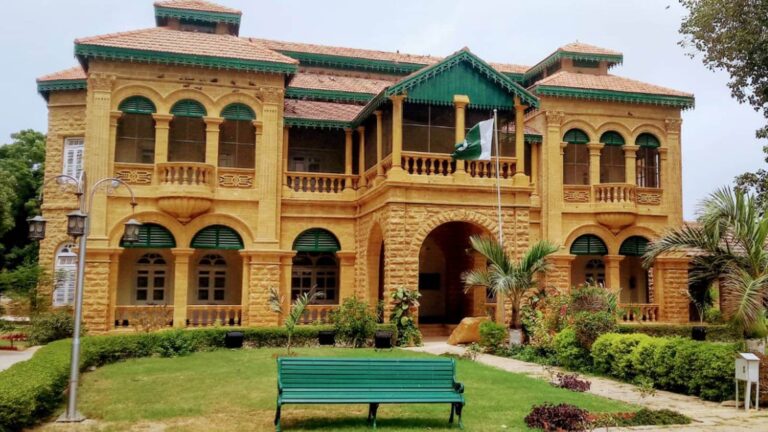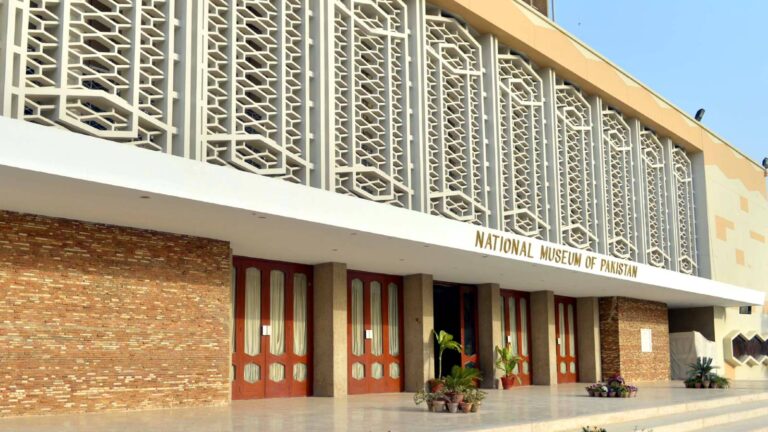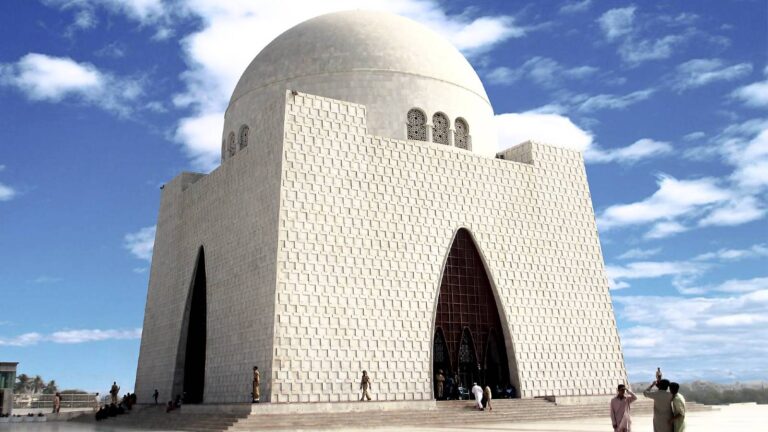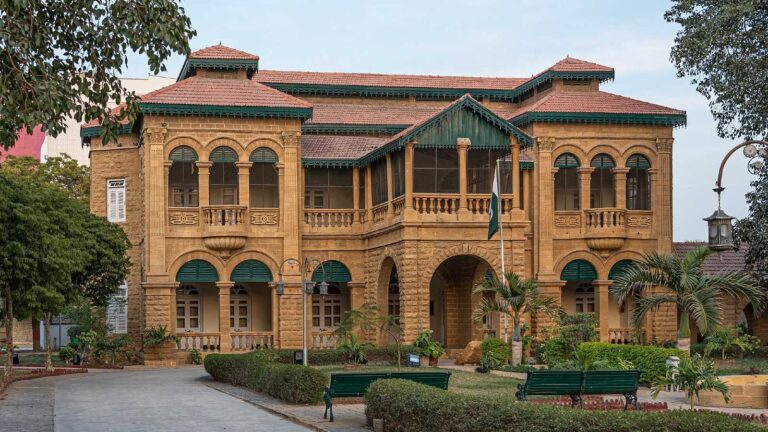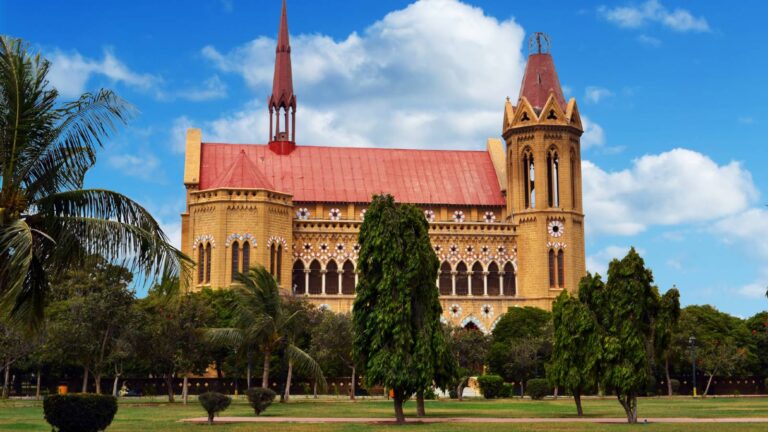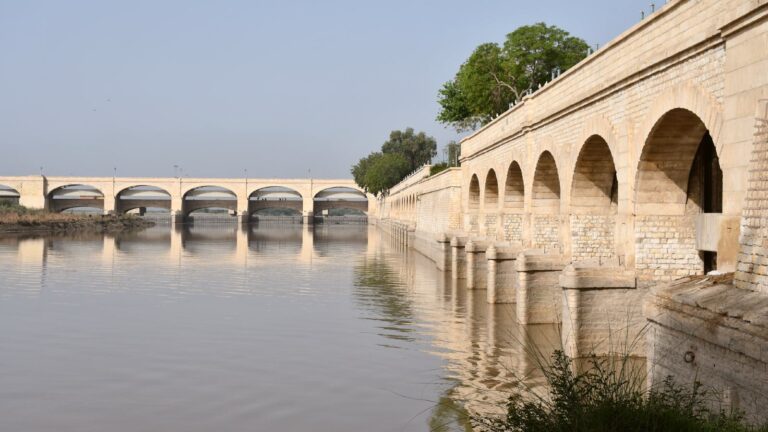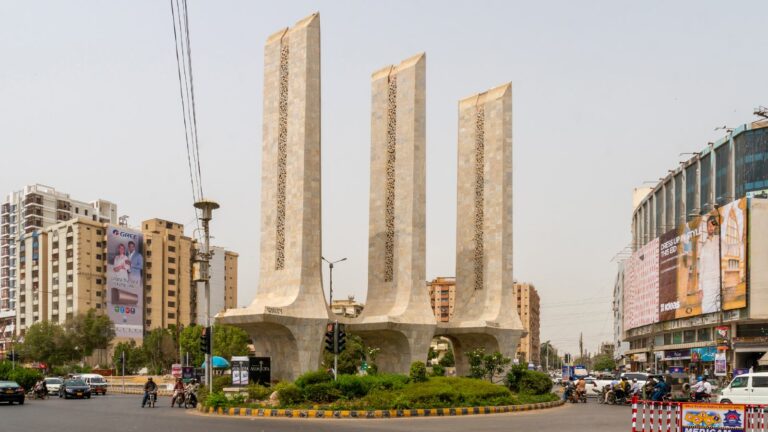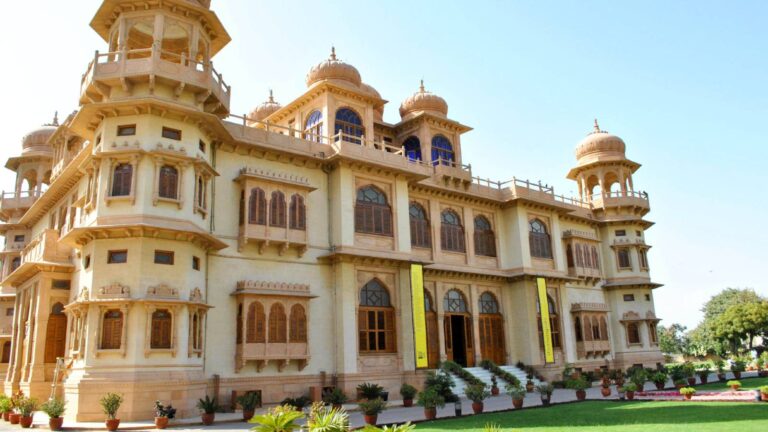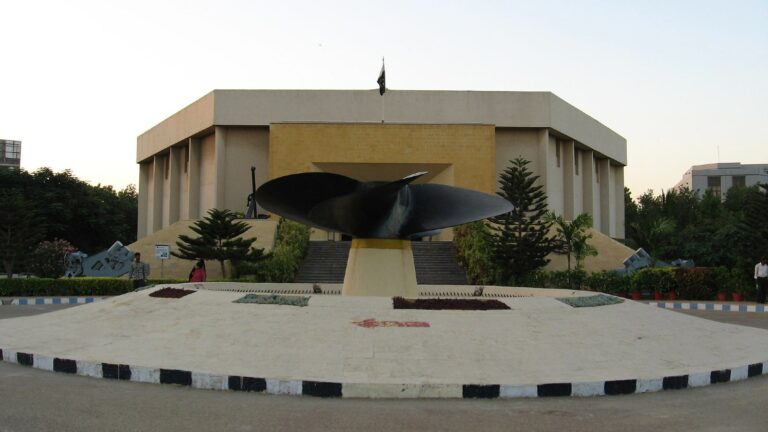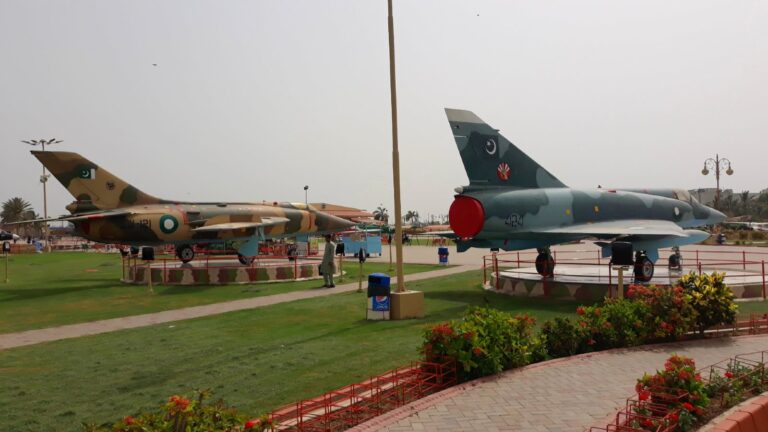Getting There
Abdullah Shah Ghazi is located in Clifton in Karachi, in Sindh province of Pakistan.
What to Expect
The tomb is built on a high platform, the shrine is made of a high, square chamber and a green-and-white striped dome, decorated with Sindhi Tilework, flags and buntings. Devotees to the shrine caress the silver railing around the burial place and drape it with garlands of flowers.
The shrine is highly regarded and respected by people of all ethnicities and religions. Free meals and the devotional poetry such as Qawwali was the essential features of the shrine.
The shrine was always devotionally connected to Nadir Ali Shah’s dervish lodge, called KAFI in Sehwan Sharif and for a long time the arrangements of the shrine and langar continued under his supervision.
History
Abdullah Shah Ghazi was an eighth century Muslim mystic and Sufi. His real name was Abdullah al-Ashtar. His father, Muhammad al-Nafs al-Zakiyya, was a descendant of or last prophet MUHAMMAD SALLALLAHU ALAIHI WASALLAM through his daughter Fatimah.
He was born in Medina in 720 and arrived in Sindh in 760 as a horse-trader, and brought with him a large number of horses purchased from Kufa, Iraq Abdullah Shah Ghazi was said to have been killed by enemies in a forest, with devotees returning his body to a site on the coast where he is said to have first stepped foot in Sindh. He was buried atop a hillock in Karachi along with his brother MisryShah.
Abdullah Shah Ghazi’s shrine is believed by some to protect Karachi from direct hit from Indian Ocean cyclones. Until the early twentieth century, the shrine was a small hut on top of a sandy hill in Clifton.
The shrine was built and expanded by Syed Nadir Ali Shah, a Sufi saint of Qalandariyya Sufi Order and the then custodian of the shrine. The iconic building of the shrine, its stairs, mosque, LangarKhana, Qawwali Hall and pilgrim lodge were built under his supervision.
The shrine became a centre of attraction for people belonging to different sects, ethnicities and sections of society. In 2011, the shrine was handed over to a Pakistani construction giant, Bahria Town, who renovated the exterior of the shrine, this received a mixed response from the residents of Karachi.
Facilities Available
Free meal served two times a day.

